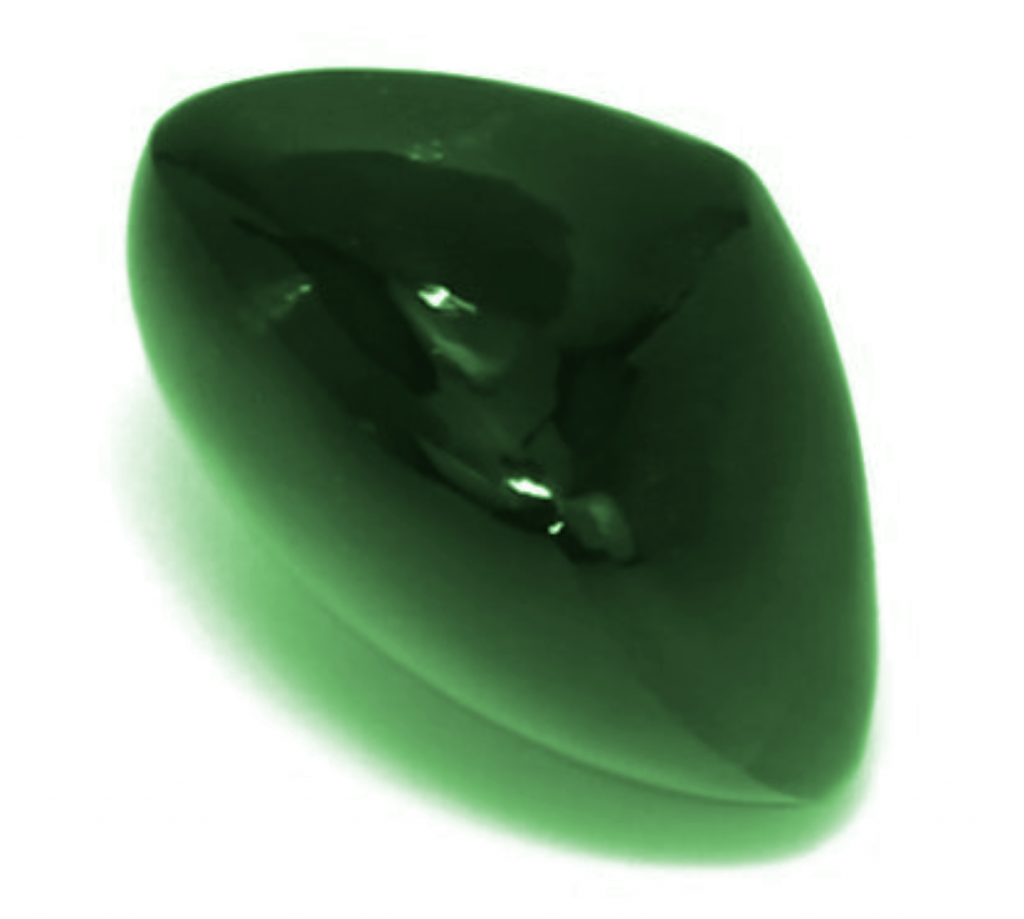All About Emerald Cabochons
E1162 | play | medium | right | “Emerald ID: E1162 Weight: 15.57 Carats Origin: Zambia”While not necessarily the most well-known type of emerald, emerald cabochons have their own appeal. Gem material that is cut as a cabochon are rarely transparent, but do show very high color purity with no extinction . Since the appeal of gems like emeralds is color, this is a very appealing shape that gem cutters have in their skillset. The potential variety of their cuts is not as varied as faceted or carved gems, but there are a few basic styles to be aware of.
Cabochon

A basic cabochon cut is defined by having a domed top. Emerald cabochons will typically have a curved bottom too, but that isn’t necessarily the rule as the bottom can be flat. Sometimes the bottom can be flat too or be curved similarly to the top, whatever works for the individual gem. The curves can be adjusted in many ways, but often stick to a side profile like the example under the title.
Sugarloaf
While somewhat of a rare cut for emeralds, the sugarloaf is a very possible cut for cabochon-grade emerald material.
This cut is defined by having four sides polished to a point, like a pyramid with rounded corners. The base is usually curved, though this is not a rule and it can be flat too (like the typical domed examples).
Occasionally, exceptionally clear gems will be polished into a sugarloaf for a one-of-a-kind appearance, though given that emeralds are frequently included this will never be the case for them. Transparent emerald rough is so rare that all of it gets faceted to top-dollar emeralds, without question. Synthetic, man-made emeralds would be another story, but those are frequently included too.


Mixed Cut

The term mixed-cut is not exclusive to any type of cut, since it specifically refers to mixing different types of cuts. As an example, a mixed cut gem could have the top of an oval cut with a sugarloaf-like cut on the bottom.
An extreme example of a mixed cut would be if part of the gem were faceted and another part was carved. These types of cuts are typically reserved for the most and least transparent gems respectively, and would be a very unusual combination for any gem much less an emerald.
Reasons for the Cut

Cabochon cuts are done to show a cat’s eye emerald, though this is a very rare phenomenon in emeralds. Not that many emeralds are able to show this effect, and most cutters do not search for this feature in their rough emeralds. There are more cat’s eye emeralds on the market now than what there used to be decades ago, but high-quality ones remain a rarity.
The most likely reason an emerald will be cut as a cabochon is to be gentler on fractures inside the emerald during cutting and polishing. Cutting a gem is a very brutal process, which is why only very clear emeralds get faceted and more experienced cutters are desirable. If there are too many cracks, the gem won’t be able to withstand polishing. If the cutter is not very careful of how they work, the gem they are polishing can shatter on the wheel.
This list of cabochon cuts is by no means a definitive one. New designs are being developed and implemented all the time.

